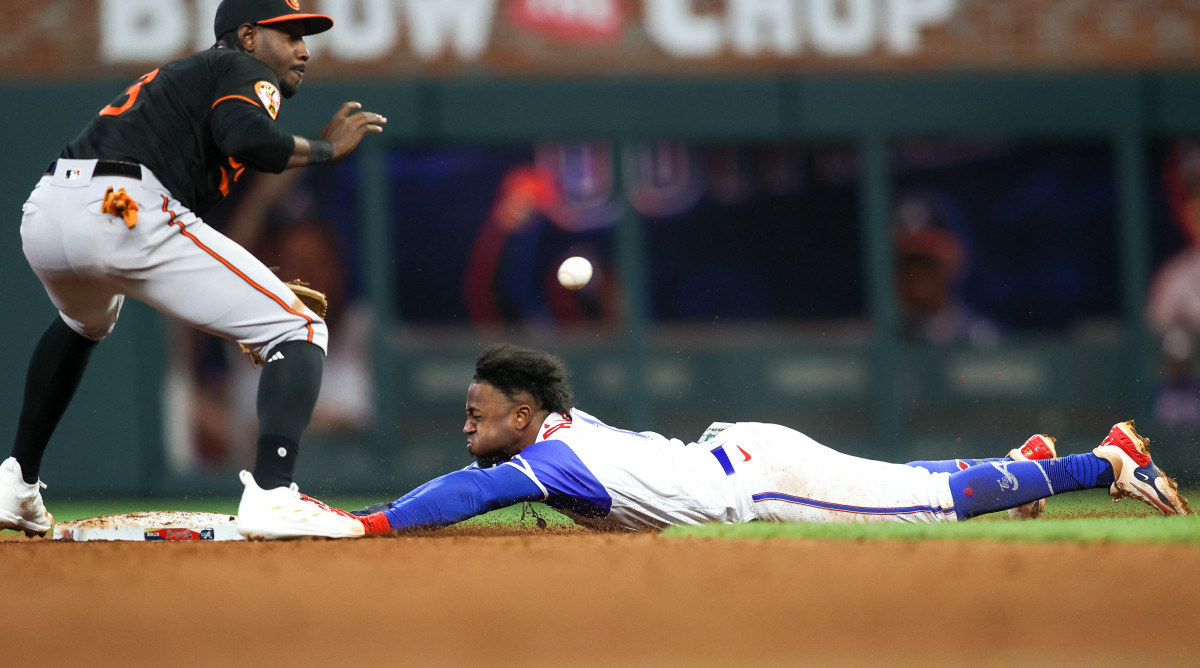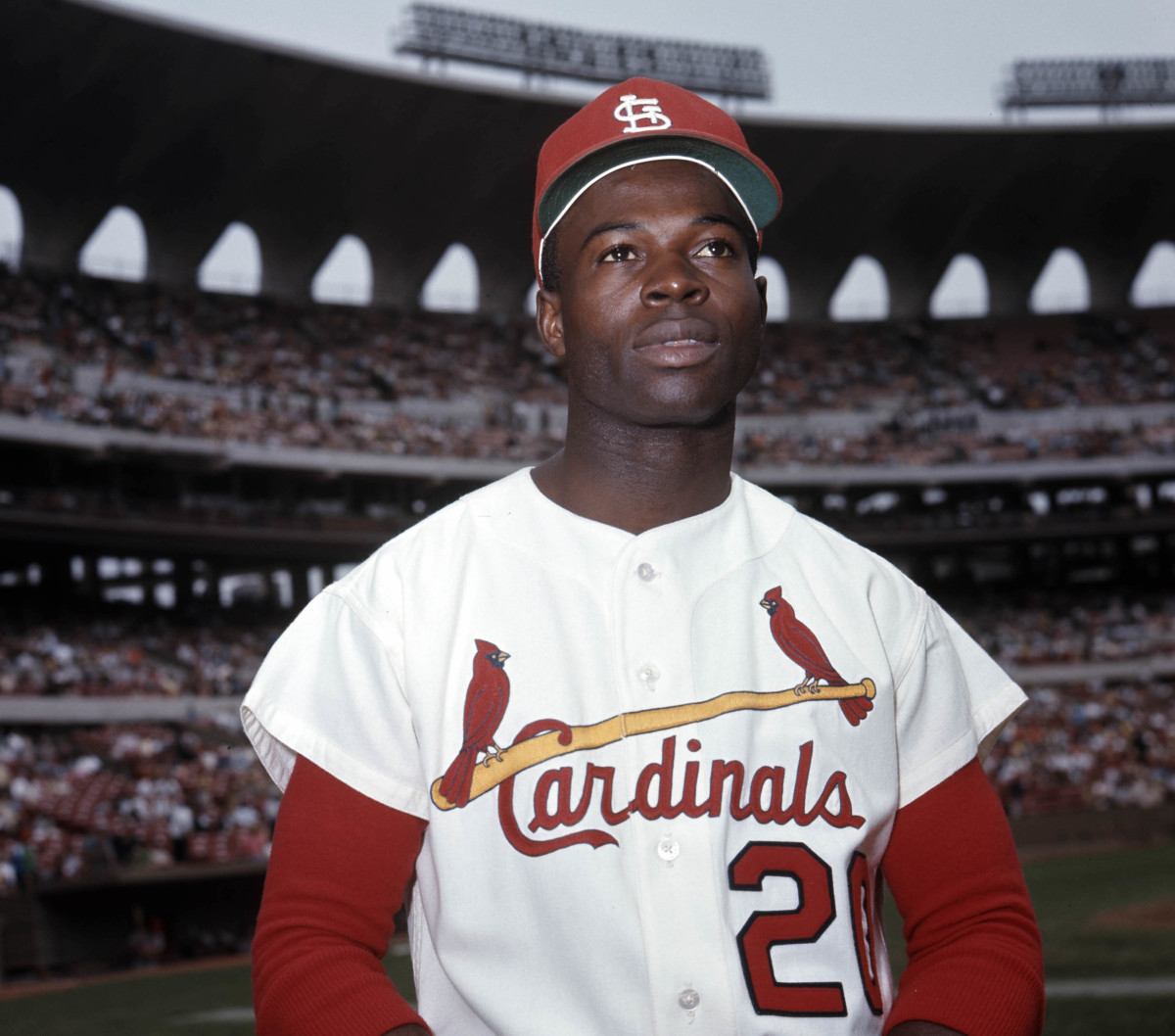The Unprecedented Surge in Stolen Bases Has One Historical Parallel

To look at MLB’s history of leaguewide statistics is to see a catalog of its rule changes. In an otherwise gently undulating landscape of trends, the changes cause the spikes and bounces and dives. It’s not hard to look at a graph of league ERA and figure out that the mound was lowered in 1969, for instance, or to examine average slugging percentages and guess that something like the designated hitter came along in ‘73.
Or to look at stolen base numbers and see that something clearly seismic is happening in 2023.

This has been the biggest year-over-year increase in stolen bases ever recorded in modern baseball. Many of the other rule changes this season have had more subtle effects on stat lines. (The shift ban has nudged the league batting average up only slightly, for example, putting it in line with the number seen just a couple of years ago.) But the bigger bases and limits on pickoff moves are so far working exactly as intended. They’ve triggered a kind of change previously unseen in just a year.
And yet … as far as stolen bases are concerned, baseball has (kind of) been here before, and it’s (kind of) managed to cover the same ground, albeit in a very different way.
Here are the biggest increases in stolen base rates, year over year, since comprehensive steal statistics began consistently being recorded in 1920:
Year 1 | SB Per Game | Year 2 | SB Per Game | YoY Change |
|---|---|---|---|---|
2022 | 0.51 | 2023 | 0.71 | 0.20 |
1975 | 0.65 | 1976 | 0.79 | 0.14 |
1973 | 0.52 | 1974 | 0.64 | 0.12 |
These are the only recorded jumps of more than 0.1 stolen bases per team game per year. (The average yearly change is almost vanishingly small—less than a one-thousandth of a steal.) In other words, yes, this season has offered an increase in stolen bases that is absolutely bonkers by historical standards. But look at the other two years with big changes here. The stolen base environment of 2022 was very similar to that of 1973. And in the space of a few seasons, steals made a comeback in a big way, surging to their highest mark in decades—without any serious accompanying rule changes.
So as the league makes its current big jump in steals—now in just one year and deliberately orchestrated through a new rule book—it’s worth looking back at the one time baseball managed to cover some roughly comparable ground. It’s not exactly instructive to the current moment. (The circumstances are different enough that the situations can’t be directly compared.) But it’s nonetheless interesting.
Watch MLB with fuboTV. Start your free trial today.
The ‘70s spike was a perfect storm of several factors. The league’s low batting averages early in the decade had placed a premium on other ways of boosting offense—including baserunning. Everyone was suddenly interested in the value that could be picked up on the margins through stolen bases. (At its most extreme, this meant a designated runner becoming a roster priority for the A’s.) A set of new, bigger stadiums made home runs more difficult and small ball more important. The proliferation of AstroTurf across the sport helped speed up the game. And ’74, the first year of the spike, owes a lot to one player in particular: Lou Brock stole a then-record 118 bases that season.

But this was also the crest of a wave that had been slowly building for years. It helps to realize just how rare stealing had become in the decades before. If it seemed like the last few years represented the nadir of the steal? It’s not even close. From 2019 to ‘21, when anxiety over the lack of stealing seemed at its modern peak, the stolen base rate had only just dipped below 0.50. (Or, in other words, fewer than one steal per team every two games.) That was the lowest it had been since the early 1970s. But that was still higher than it had been at any point in the ‘40s, ‘50s or ‘60s.
The decline of steals in that time was something of a self-reinforcing cycle. As stolen bases grew rarer, managers became increasingly risk-averse, less likely to encourage stealing even in situations where it may have seemed obvious. Even fast players weren’t coached much in how to apply their skills, such as how to study a pitcher or build the right lead, because there was simply less organizational emphasis on the practice. And once there had been one generation of players who stole less often? There were that many fewer examples for the next generation.
Or look at it another way. Take a moment to guess the season with the most skewed ratio of home runs to stolen bases—the year with the most homers per steal. Thinking of the long ball spike in 2018 and ‘19? Of the steroid era? Of something in between? Think again! It’s 1950. There were 3.23 home runs per stolen base that season. For most of the ‘50s, in fact, there were three or more homers for each steal. That’s partially due to the fact that slugging was on the rise at the time, but it owes far, far more to the record low steals that decade. Even 2019, with its record home run total, saw the homer-to-steal ratio top out at 2.96. The balance of power and speed in the last few years caused the league to remake the game with new rules. But it had nothing on the 1950s.
The game began to reverse that stealing trend in the ‘60s—due in large part to the influence of Dodgers shortstop Maury Wills, who jumped into the majors with a running start, leading the National League in steals in each of his first six seasons. In 1962, he became the first player to steal more than 100 bases. He was more than just a talented player in this regard. He was an example of what felt like an entirely new (if actually quite old) way to play the game.
“If Babe Ruth caused the home run revolution, Maury led the counter-revolution that restored the stolen base to a central position in baseball strategy,” wrote the Sporting News in 1980. “When Wills began doing it regularly, the idea of reviving the weapon—not as a special case, but as a regular part of the baseball arsenal—started to grow in other baseball minds.” Wills’s success in the ‘60s paved the way for Brock to thrive in the ‘70s, and by the end of the decade, another base stealer was ready to take up the mantle: Rickey Henderson debuted in ‘79.
The influence of these individual, paradigm-shifting stars, paired with changes in the larger offensive environment and in ballpark construction trends, was enough to get baseball stealing again. The current spike may not be quite as fun to narrate: The rule book isn’t nearly as inspiring a central figure as Willis or Brock. Yet, this season proves, it can be even more effective.
